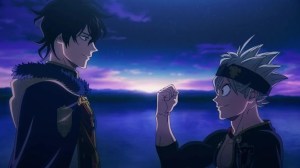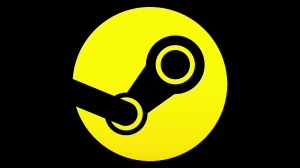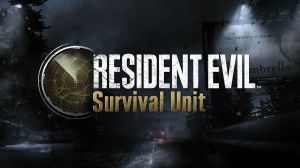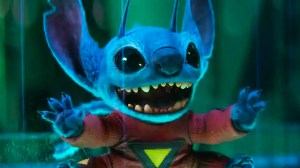
IDW co-founder, CEO, and writer Ted Adams and artist Gabriel Rodriguez (Locke & Key) teamed up to adapt the classic H.G. Wells story The Island of Dr. Moreau with the first issue debuting this past week. The first half of the story reveals a rich visual narrative with all of Moreau’s devilish animal experiments rendered with extraordinary attention to detail by Rodriguez. It also makes clear why this story, and much of Wells’ classic work, remains very relevant in the 21st century.
Videos by ComicBook.com
ComicBook.Com comic reviews editor Chase Magnett spoke with both of the collaborators about revitalizing this tale for a new medium, updating elements from a 123 year old story, and addressing new ethical and scientific concerns. Both creators reveal a wealth of knowledge about both the original text and the comics that have made them stars, providing a great deal of insight before or after reading the first issue.
ComicBook.Com: I’d like to start as close to the beginning on a project like this as possible. Could you tell us a bit about the first time you encountered H.G. Wells‘ The Island of Dr. Moreau (or one of its adaptations)? What initially drew you to this strange blend of science fiction and horror?
Ted Adams: Marvel published a comic book adaptation of the 70s Moreau movie and back then—when I was 8 or 9—I read every Marvel comic book I could get my hands on, even the ones that didn’t have superheroes.
Gabriel Rodriguez: Being a reader of several classic sf books from H.G. Wells when I was a teenager, I was aware of the existence of The Island of Dr. Moreau, but never got access to a copy in Spanish of the novel available in Chile. So, my first approach to the full story was the horribly failed John Frankenheimer’s movie from 1996. I immediately got the appeal of the concept and world the story proposed, so as soon as I polished my English reading skills, I got to read the novel and loved it.
ComicBook: The original tale is more than one hundred years old, but it has continued to be updated and adapted across all of that time. How did you approach making the source material resonate in the year 2019?
Rodriguez: To me it’s very straightforward. Despite being a story of weird science, animal rights, the question of what is to be human, amongst many other contemporary relevant topics, is a story about responsibility in power and, above all, about empathy. Can’t imagine a more universal, relevant or appealing topic, presented in such a challenging and mind-bending way in this particular story.
Adams: Honestly, I think the story is arguably more relevant today than it was when Wells wrote it. It’s principally about a scientist who can’t stop himself from acting like a God. Scientists and tech entrepreneurs today are up to a whole lot worse. The question Wells was asking—and it’s a question we should all be asking today‚is: “Just because you can do something, should you?” In 2019, two quick examples come to mind: “Should we gene edit human embryos?” “Should we create artificial intelligence that mimics human behavior and intelligence?” I’m sure everyone reading this can come up with their own examples of what scares them.
ComicBook: A lot has changed in how we discuss the topic of animal rights since 1896. Does our modern concern for animal welfare play a prominent role in your approach to the story?
Adams: We haven’t changed Wells plot to address our modern view of animal rights. It’s clear in the book he didn’t think what Moreau was doing was a good idea. The animals in his novel are the most likeable characters in it.
Rodriguez: The way Wells deal with the notion of “animal rights” in this story easily becomes a reflection of how the relentless and arrogant use of power and science dehumanizes. In that regard, as much as the animals are victims of Moreau’s experiments, we humans become victims of each other when we get lost in the maze of power struggles and domination fantasies. Pretty much establishes that the wrong way in which many times we treat animals it’s only an extension of how mercilessly we can treat each other.
ComicBook: One notable change from the start is a change in narrator with Ellen Prendick replacing Edward Prendick. What compelled you about adding a woman’s perspective to the story?
Rodriguez: It helped us to add extra ingredients for the conflicts at play in the characters’ dynamics in the story, to make Ellen a more active participant of the plot development than the original mostly witness-only perspective of Edward in the original novel, and also to contrast more dramatically the antagonists point of view considering that the power fantasy behind Moreau’s experiments serves as a metaphor of an extreme and deviant male dominance aspiration.
Adams: One thing that has changed since Wells wrote his book is we’re more aware today when there’s a lack of gender or racial diversity in our entertainment. There are only three human characters in the book and Gabe had the good idea to change the narrator to a woman.
ComicBook: I imagine that designing the many hybrid beings on the island would prove to be one of the most interesting (and possibly challenging) elements in bringing this story to comics? How did you go about constructing their appearances?
Rodriguez: It was quite a challenge for several reasons. As a start, the creatures are in the original novel itself described as very weird creatures, as each of them was not a single animal breed “humanized”, but a sort of Frankenstein kind of creatures made of combinations of several animals. So specially to design their respective body language, we tried to combine the body parts and structures in a way that could help us to get the characters a body language according to their dramatic role in the story. We also wanted to give the Beastfolk a sense of primitive society, with different creatures performing different roles and having distinctive personalities, so we try as much as we could to make them unique and having a recognizable behavior, despite many of them not even talking once in this very contained 50 pages story.
ComicBook: Creating a character who was initially a pig but has been rebuilt like a man… Did you have to research much animal anatomy to go with the more familiar elements of human anatomy?
Rodriguez: As much as I could, and not as much as I would want, but I think we were successful in building a rich cast of characters, believable and appealing. Researching the way their limbs behave, their different proportions and movement logic helped to design them in a way that was both functional and visually dramatic. Yet the trickiest thing with these hybrid characters was that, despite the fact of them appearing at the beginning as horrible, dreading or terrifying, once they’ve become familiar to the reader they had to convey fragility, sadness and despair. They are, after all, incredibly tragic characters.
ComicBook: Your adaptation is still set in the Victorian Era. How did you go about researching historical elements, both for the presentation and narrative? How important is the period to your take on the story?
Adams: In our adaptation, I fleshed out the flashback scene where we learn more about Moreau’s past and I had fun researching the lurid tabloids of that period that would have reported on him.
Gabriel Rodriguez: And we try as much as we could to combine accurate historical elements (furniture, vehicles, medical equipment, clothing) with bizarre over-stretched steampunk proto sci-fi technological elements and architecture, all of them blended in the labyrinthic background of the ever present and absorbing island geography and jungle.
ComicBook: One last question, are there any other comics, books, or films you would recommend readers of your version of The Island of Dr. Moreau check out after they finish?
Adams: I’m not sure there’s been a great adaptation of The Island of Dr. Moreau. In fact, that was one of the points Gabe made to me when we were considering which book to work on together. I would recommend to your readers that they spend some time reading any of Wells’ books. All of his genre titles—Moreau, War of the Worlds, The Time Machine, and The Invisible Man being the most notable—are great. He also wrote more “serious” novels—in the spirit of Dickens—and I enjoyed The History of Mr. Polly.
Rodriguez: Read anything from Wells if you haven’t, of course, and surely his “big four”: War Of The Worlds, The Time Machine, The Invisible Man and The Island Of Doctor Moreau. And if you want to dive into this kind of comics’ literature, explore the works of creators such as Bernie Wrightson, Richard Corben, Mike Mignola, Grant Morrison, Hermann Huppen, Alejandro Jodorowsky, Moebius, Phillipe Druillet, Steve Niles, Alan Moore, John Totleben, Stephen Bissette, Paul Gillon, Junji Ito, and so many more that use to deal not only with the visually bizarre and dreading, but also with a constant exploration of what means to be human and how we can challenge and question our boundaries as such.
The Island of Dr. Moreau #1 is available to purchase now from local comic book stores and digital outlets.









